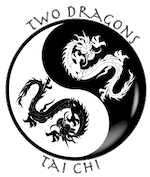History of QiGong
There is so much information on the internet about the history of QiGong that it's almost impossible to separate the good from the bad... I'll provide a few links that I believe are excellent resources on the history of QiGong:
A brief history of Qigong by Peter Deadman
A brief history of QiGong from YMAA
Internal Principals of QiGong
There are two basic types of QiGong - dynamic and static. Dynamic requires more body/limb movement while static requires very little physical movement. Both are designed to cultivate Qi, or inner energy. Dynamic QiGong also works the muscles, joints, and ligaments and stimulates blood flow. It is an excellent form of gentle exercise that will build balance, flexibility, and assist with overall mental and physical health.
Emphasis is placed on the elasticity of the body, the mobility of the joints, the support of the skeletal structure, the twisting and stretching of the organs and connective tissue, and the proper alignment of the body's parts in order to move as a unified whole. This twisting of the body causes the organs to twist as well, which activates the organs to have a detoxification reaction, whereby the liver, intestines, and other organs release toxins that were stored deep in the body so that they can be flushed out. The ultimate aim of this practice is to make the practitioner one with nature, physically, emotionally, and spiritually.
The mental aspect allow the practitioner to get more in touch with their body - feeling the connection between breath, movement, and energy flow. The more one practices the more one will experience this connection.
